Using the same approach as in previous versions with Machine Learning and Artificial Intelligence technologies, Microsoft will begin the gradual and very slow rollout on Windows 11 on Oct. 5. Initially, the deployment will start with newer devices that meet the minimum hardware requirements and have a good upgrade experience. Also, on this day, retailers and computer companies (Dell, HP, ASUS, Acer, etc.) will begin shipping many of their new laptops and desktops with Windows 11 pre-installed. He also acknowledged the expansion of Microsoft Store to include more "traditional" desktop applications. If your existing Windows 10 PC is running Windows 10 20H1 or later and meets the minimum hardware specifications it will be able to upgrade to Windows 11.
The upgrade rollout plan is still being finalized, but for most devices already in use today, we expect it to be ready sometime in early 2022. Not all Windows 10 PCs that are eligible to upgrade will be offered to upgrade at the same time. To see if your PC is eligible to upgrade, refer to the specifications here.
Once the upgrade rollout has started, you can check if it is ready for your device by going to Settings/Windows Updates. Similar to how end users are notified when updates are available in Windows 10, end users will see an indication in the notification areas of the taskbar in the bottom right, that the upgrade is available. More information on how that is presented will be available at a later date.
Additional desktop notification options may be also be added at a later date. If your existing Windows 10 PC is running the most current version of Windows 10 and meets the minimum hardware specifications it will be able to upgrade to Windows 11. Not all Windows 10 PCs that are eligible to upgrade to Windows 11 will be offered to upgrade at the same time. To see if your PC is eligible to upgrade, download the PC Health Check app. Windows 11 requires modern hardware to run, but if your PC has a CPU released in the last 3-4 years, you're probably in luck. To provide enhanced security to its users, Microsoft is requiring all PCs to feature a specialized chip called a Trusted Platform Module, or TPM, of at least version 2.0.
This chip is found in most modern CPUs and also many motherboards. Computers built before 2017 may not be compatible, however, so it's important to take a close look at the minimum system requirements before opting into an upgrade. Microsoft has temporarily disabled its PC Health Check tool to update it for the Windows 11 release, but it promises to advise you of any compatibility issues you may be facing ahead of the upgrade. Cunningham concluded that "as I've dug into and learned its ins and outs for this review, I've warmed to it more", but argued that the OS was facing similar "public perception" issues to Windows Vista and Windows 8. Original equipment manufacturers can still ship computers without a TPM 2.0 coprocessor upon Microsoft's approval. Some third-party software may refuse to run on unsupported configurations of Windows 11.
Internet Explorer has been replaced by the Chromium-based Microsoft Edge as the default web browser, and Microsoft Teams is integrated into the Windows shell. Microsoft also announced plans to allow more flexibility in software that can be distributed via Microsoft Store, and to support Android apps on Windows 11 . Windows 11 is the latest version of the popular operating system for desktop, laptop, tablet, and mobile PCs developed by Microsoft Corporation.
Windows 11 brings a number of enhancements to Windows users, including a new look, multitasking enhancements, improved gaming performance, Android app support, and more. Aesthetically, it will have a new, frosted glass look, and a reworked start menu, now known as the Dock, optimized for touch input on the latest devices. Users will be able to rearrange windows into new arrangements, like a 4x4 grid, using Snap Layouts that can then be saved into Snap Groups and recalled later.
The desktop will also be enhanced with the addition of Windows Widgets, an AI-driven feed of updates based on your interests and daily tasks, including daily calendar updates, traffic, weather, sports, and more. At least 16GB of RAM The basic system requirements of Windows 11 differ significantly from Windows 10. Windows 11 only supports 64-bit systems such as those using an x86-64 or ARM64 processor; IA-32 processors are no longer supported.
Thus, Windows 11 is the first ever consumer version of Windows not to support 32-bit processors and 16-bit software . The minimum RAM and storage requirements were also increased; Windows 11 now requires at least 4GB of RAM and 64GB of storage. The compatibility list includes the Intel Core i7-7820HQ, a seventh-generation processor used by the Surface Studio 2, although only on devices that shipped with DCH-based drivers. Windows 11 has received a fresh coat of paint from Microsoft and gained several new features and performance improvements.
However, the company had previously revealed that older computers that did not match certain hardware requirements would not be able to upgrade. If your computer meets the minimum requirements to run Windows 11, you can sign up for the Windows Insider Program today and download the update today. If you'd rather wait for the official release, which will also be free for eligible Windows 10 users, the only thing to do at this point is wait.
Once it's available, you'll either be able to download directly through the Windows Update tool or as a standalone download from Microsoft. As we mention above, if you do decide to try the preview version, be sure to back up your computer and prepare to encounter a few bugs in this early release. For productivity, the operating system will now feature native Microsoft Teams integration. Microsoft says this will make it easier to connect with friends and colleagues across devices by adding Teams functionality right into the start menu and taskbar.
If you use Windows on a laptop with an external display, Windows 11 will also remember the position of windows on that screen when disconnected and will restore them once it's plugged back in. As part of the minimum system requirements, Windows 11 only runs on devices with a Trusted Platform Module 2.0 security coprocessor. According to Microsoft, the TPM 2.0 coprocessor is a "critical building block" for protection against firmware and hardware attacks. In addition, Microsoft now requires devices with Windows 11 to include virtualization-based security , hypervisor-protected code integrity , and Secure Boot built-in and enabled by default. The operating system also features hardware-enforced stack protection for supported Intel and AMD processors for protection against zero-day exploits. In October 2019, Microsoft announced "Windows 10X", a future edition of Windows 10 designed exclusively for dual-touchscreen devices such as the then-upcoming Surface Neo.
Legacy Windows applications would also be required to run in "containers" to ensure performance and power optimization. Microsoft stated that it planned to release Windows 10X devices by the end of 2020. Citing security considerations, the system requirements for Windows 11 were increased over Windows 10. While the OS can be installed on unsupported processors, Microsoft does not guarantee the availability of updates.
Windows 11 also drops support for 32-bit x86 CPUs and devices which use BIOS firmware. Unless you crave the cutting edge, it's okay to wait on upgrading for now. Windows updates are exciting and it can be tempting to be on the ground floor for any major technology release.
Bugs can happen, sometimes big ones that can leave you rolling back to a previous operating system version. More frequently, you'll find that certain features just aren't finished yet and the experience isn't as polished as it will eventually become. You'll be one of the first to experience those exciting new features but it often demands more patience as they continue to be developed. Note that this minimum configuration will only apply when Windows 11 is released and may change between now and then. In the meantime, the Insider program does not restrict the installation of Windows 11 on PCs that do not meet the criteria for TPM and processor list.
Please note, Microsoft warns that it should not be possible to install the stable version of Windows 11 on PCs that do not meet the final criteria. The firm indicates that in October, it will be necessary to reinstall Windows 10 on these PCs to continue to receive support. Navigate to the downloaded Windows 11 ISO file, and select it. Rufus will populate the rest of the settings, which you have to change according to your system of choice.Under the Image Options label, select Extended Windows 11 in installation (no TPM / no Secure Boot). You should see the Target System label reflect your BIOS Mode as you switch the Partition Scheme.If you have a rather old 64-bit system you're attempting this on, check the Add fixes for old BIOSes option. Most Windows 10 PCs currently being sold will be able to upgrade to Windows 11.
For the PC to be able to upgrade to Windows 11, it must meet the minimum hardware specifications and specific hardware is required for some features. The upgrade rollout plan is still being finalized but is scheduled to begin late in 2021 and continue into 2022. Microsoft has released the minimum hardware requirements for Windows 11. Snap Layouts should offer better multitasking support, especially on large or ultrawide monitors. DirectStorage can offer big reductions to load times for gamers.
Android app support opens a whole new app ecosystem up to Windows users. Only time will tell if Windows 11 proves to be as popular as Windows 10, but it seems like Microsoft is providing compelling reasons to sign up for the update when the time is right for you. Most Windows 10 PCs currently being sold will be able to upgrade to New Windows. For the PC to be able to upgrade to New Windows, it must meet the minimum hardware specifications and specific hardware is required for some features found here.
The upgrade rollout plan is still being finalised but is scheduled to begin late in 2021 and continue into 2022. Windows 11 is now available as a free upgrade for computers already running Windows 10 that meet the minimum system requirements, and it is also available pre-installed on many branded devices. However, the rollout will be phased and controlled to provide a good upgrade experience, which means that it'll take months before the new version reaches every device. With its machine learning technology, Microsoft has determined further devices on which the Windows 11 update prompt should now appear automatically. The Redmond-based software company has not revealed any additional information on which exact PC configurations are included in this third group. However, manually triggering the Windows 11 update, which is how many tech enthusiasts probably installed Windows 11 in the past weeks, is no longer necessary on these PCs.
Users can simply check the regular Windows Update application in order to verify whether the Windows 11 upgrade is ready to download on their respective device. A redesigned user interface is present frequently throughout the operating system, building upon Fluent Design System; translucency, shadows, a new color palette, and rounded geometry are prevalent throughout the UI. The program returns one of three possible windows after the compatibility check runs. I'm running Enterprise on my production PC and have flagged this as an error or problem with Microsoft via its Feedback Hub.
Those who have managed to get a hold of the Windows 11 iso or beta version report that the new design is refreshing. Icons are livelier, and menus appear to have slightly rounded edges. The app transitions and animations appear to be seamless, delivering a better experience for users.
However, these are not all the changes that would come with the next generation of windows as more details would be revealed through the official event. After the tool becomes available, you can download it from this Microsoft support website by clicking the Download Now button under the "Create Windows 11 Installation Media" section. Then, you can launch the Media Creation Tool, use the USB flash drive option, and continue with the on-screen directions to create the installation media. Microsoft hasn't shared an official release date for Windows 11, though Microsoft has confirmed it's coming during the holiday season. There have been rumors on social media of an October release date, though this hasn't been confirmed.
If you have a computer with unsupported hardware, you should not try to upgrade to Windows 11. Although there are workarounds to bypass the TPM 2.0 and other checks, if you manage to install version 21H2, the device will state in an unsupported state. According to Microsoft, devices are likely to experience more crashes, you won't get the support of any kind, and updates are not guaranteed. It's not imperative that you upgrade your system to Windows in the next couple of weeks, or even months. For many people, that's about the time to upgrade to a newer device, one that will come with Windows 11 already installed.
Windows 11 SE was announced on November 9, 2021, as an edition exclusively for low-end devices sold in the education market, and a successor to Windows 10 S. It is bundled with applications such as Microsoft Office for Microsoft 365, Minecraft Education Edition, and Flipgrid, while OneDrive is used to save files by default. Windows 11 SE does not include Microsoft Store; third-party software is provisioned or installed by administrators. Microsoft is rolling out the OS in phases, so your system might not prompt you to upgrade just yet -- in fact, you might not find it even if you tell your computer to check for updates. An August blog post from Microsoft said the company expects "all eligible devices to be offered the free upgrade to Windows 11 by mid-2022." Don't want to wait another half a year? Read on to find out how the Windows 11 Installation Assistant is your shortcut to Windows 11.
Microsoft has made it abundantly clear that it wants to limit Windows 11 installations to certain PCs with appropriate hardware security features. Unfortunately, those requirements block many older, yet still useable, PCs from the Windows 11 upgrade. The implication is that users will need to buy new hardware to accommodate Windows 11 sooner rather than later. But only Windows 10 PCs that are running the most current version of Windows 10 and meet the minimum hardware specifications will be able to upgrade. You can check to see if you have the latest updates for Windows 10 in Settings/Windows Update.
Microsoft doesn't recommend installing Windows 11 on devices that don't meet the system requirements, but you'll still be able to do so. It's worth noting that you might not get Windows 11 updates on PCs with unsupported processors. If you haven't seen it through Windows Update yet, you can still get the final build through the Beta and Release Preview channels of the Windows Insider Program, as long as you have a compatible PC.
The Dev channel is already running rs_prerelease builds to test out new features, so be careful with that. If you enroll in the Dev channel, you'll have to do a clean installation of Windows 11 to roll back. And of course, you can also get it on a bunch of new laptops and desktops like the Surface Laptop Studio and Surface Pro 8. Microsoft said the launch will be "phased and measured," with new eligible devices getting the upgrade first and the rest getting offered the free upgrade sometime between October and mid-2022.
Microsoft is making sure that those who purchase a new laptop prior to Windows 11 being pre-installed by manufacturers will be able to update first. (Pocket-lint) - Windows 11 is now rolling out as a free upgrade for Windows 10 users. That means you should be able to download and use Windows 11 right now - as long as your PC meets the minimum system requirements.
The quickest way to get the latest version of Windows from Microsoft is to download the operating system update over the air for free, or you can go the more expensive route and buy a new Windows PC or laptop. These feel like features Microsoft will inevitably add back in over the coming months, which does highlight how meager an upgrade Windows 11 feels on launch day. And we're likely to see some other problems pop up as more people start using Windows 11, like the file explorer memory leak. Aside from the new aesthetic, the few big features Microsoft talked about in its presentation this summer—especially the ones to do with gaming—just aren't here yet. During the January 21 event, Microsoft demonstrated its "continuum" approach to developing Windows 11.
Continuum is designed to adapt Windows to the form factor of the equipment on which it works. When the tablet is connected to an overlay to the keyboard, Surface Pro 3 works like a laptop, which technically it is. Then, as soon as the keyboard is removed, a small icon appears at the bottom right of the screen, asking if you want to activate tablet mode. This action changes all applications to full screen, which makes the icons a bit larger and allows users to access the initial screen as in Windows 8, but much more updated. As soon as you plug in the keyboard, the device prompts you to return to the original mode. The taskbar's buttons are center-aligned by default, and it is permanently pinned to the bottom edge of the screen; it cannot be moved to the top, left, or right edges of the screen as in previous versions of Windows.


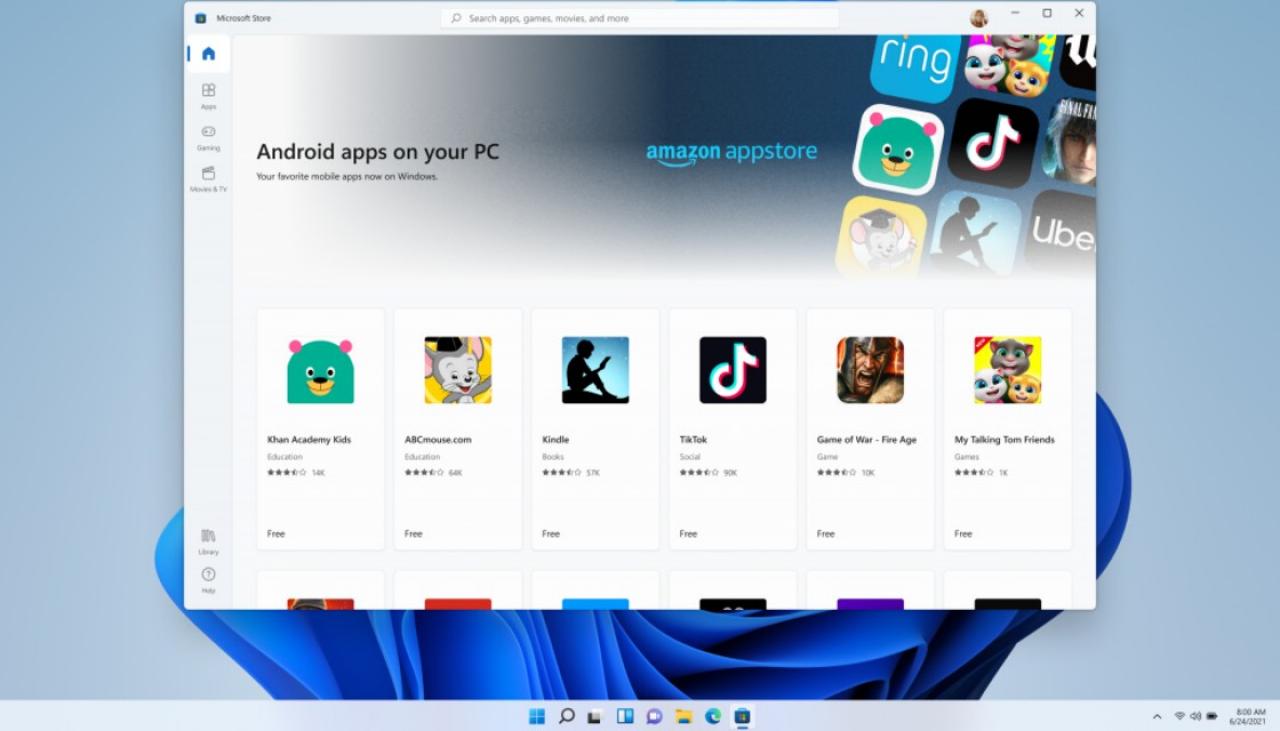







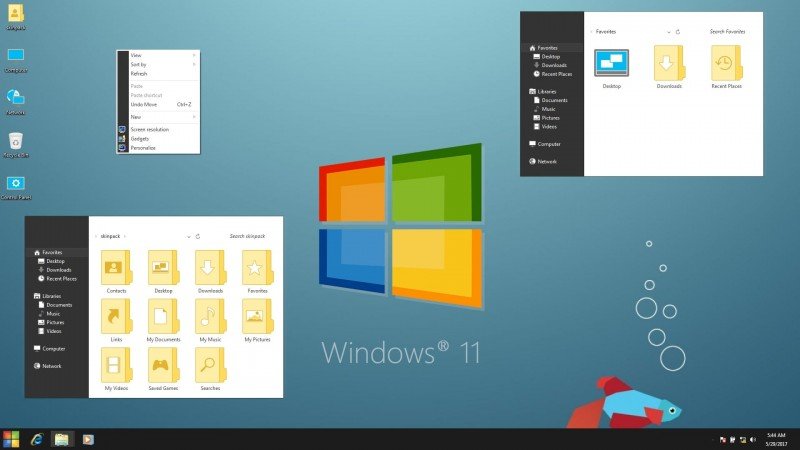

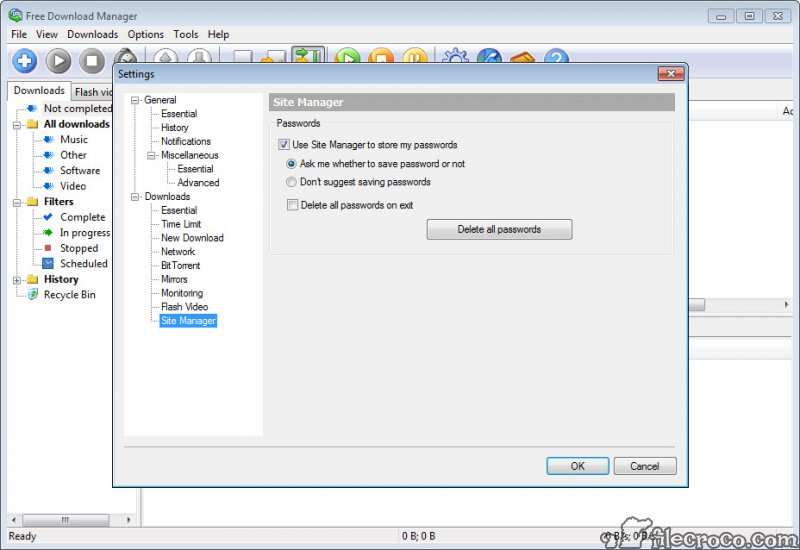










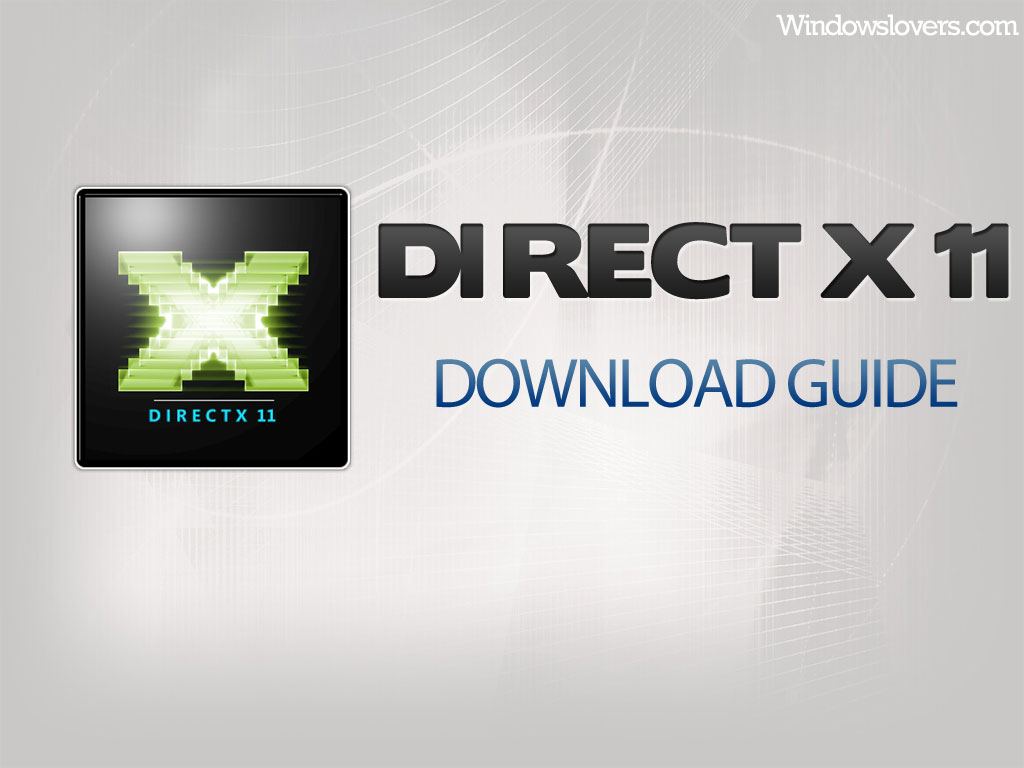


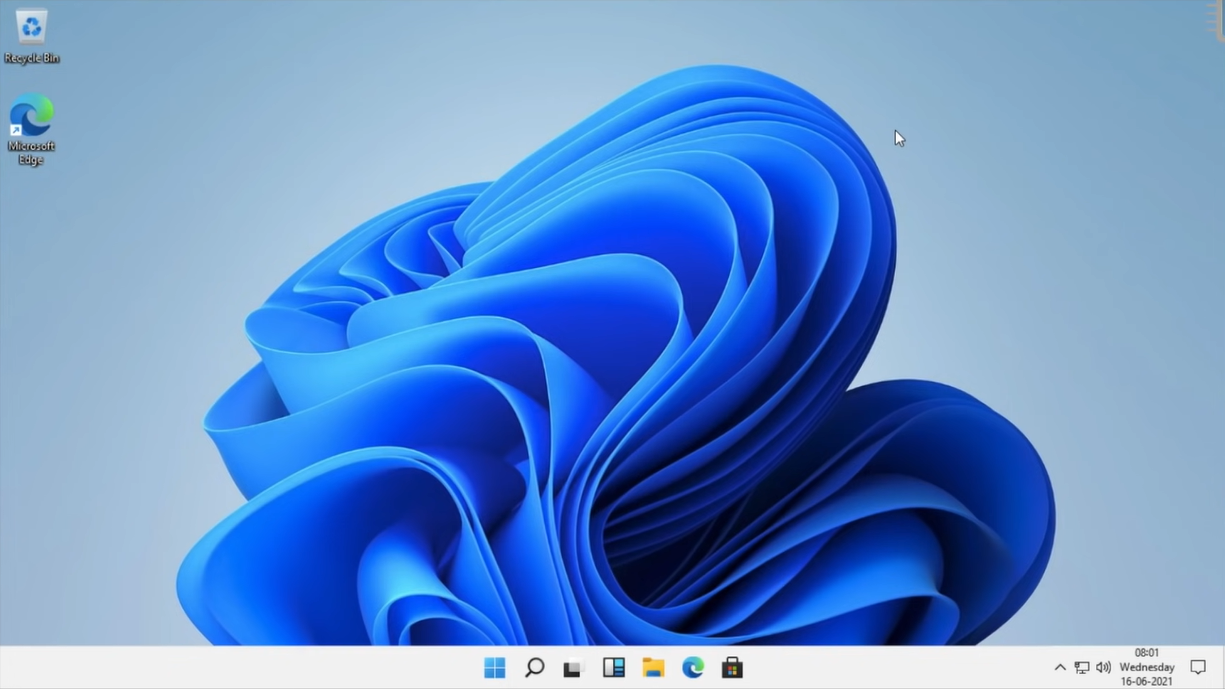
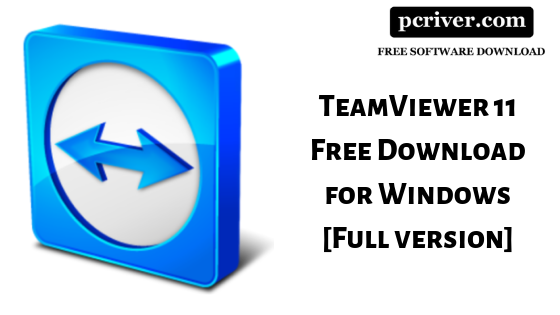


No comments:
Post a Comment
Note: Only a member of this blog may post a comment.